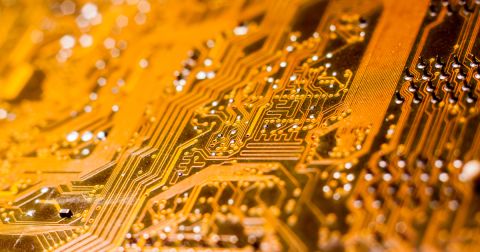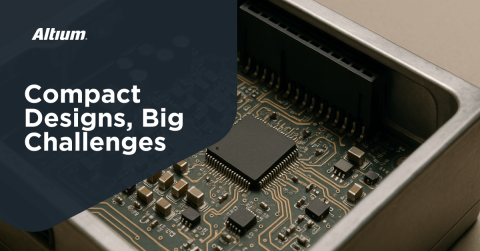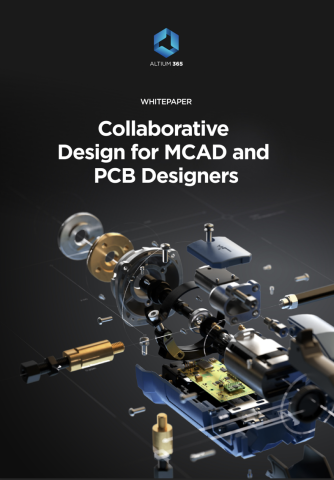What Mechanical Engineers Need to Know About Designing for Compact Consumer Devices

Today’s consumer devices pack more electronics into smaller, more mechanically complex products than ever before. Mechanical engineers are under constant pressure to design slimmer, lighter, and more unique enclosures while keeping costs down. But even with well-developed skills in their own domain, one of the biggest challenges remains the outdated and disjointed workflow between mechanical (MCAD) and electrical (ECAD) design teams.
A Web of Interconnected Constraints
Mechanical design for today’s consumer electronics is a constant exercise in trade-offs. Every decision affects multiple aspects of the product, and solving one problem often creates new challenges elsewhere.
The push for smaller, lighter devices forces mechanical engineers to work with extremely thin walls and minimal material, which requires high manufacturing precision. Small deviations in molding or machining can lead to misalignment or outright failures.
Thermal management has also become a defining factor in product design. As processors get faster and components are packed closer together, the enclosure often needs to function as part of the cooling system. This may involve using thermal interface materials, heat pipes, or vapor chambers, all without compromising durability or appearance.

Material choices are rarely straightforward. Magnesium alloys offer strength at low weight but come with higher costs. Engineered plastics may be more affordable and easier to manufacture, while sustainability and compliance requirements (RoHS, REACH) add further constraints. A single device might use dozens of specialized materials, each chosen to meet specific performance, cost, and manufacturing goals.
EMI control adds another layer of complexity. Mechanical engineers must account for board-level shielding strategies such as shielding cans, conductive gaskets, or metallization of the enclosure. Changes like adding a PCB-level EMI shield can impact weight, thermal performance, and available space. Addressing these interconnected challenges requires accurate, system-level data early in the design process.
The Collaboration Chasm: Why Throwing Files 'Over the Wall' Is a Recipe for Failure
While the physical design challenges are immense, they are often exacerbated by the broken process of collaboration between mechanical and electrical teams. The traditional workflow, based on exporting and importing static files, is a primary source of risk, error, and costly rework.
Historically, MCAD and ECAD have existed in separate worlds. The 'over-the-wall' workflow begins with an ME designing an enclosure, exporting a file, often STEP or DXF, and sending it to the electrical engineer (EE). The EE imports this file and designs the PCB to fit within the constraints. When the board layout is complete, the EE exports a file back to the ME for verification. This fragmented, stop-and-go process is a recipe for communication breakdown, where critical design intent is lost in translation.
At the heart of the problem are the neutral file formats themselves. They are static, 'dumb' representations that strip away the rich, intelligent data of the native CAD environment. This translation process is inherently lossy and leads to significant errors:
- STEP (.stp, .step): As the standard for 3D exchange, STEP transfers 'dumb' solids with no copper geometry. A thermal simulation based on a STEP file is therefore inaccurate, as it ignores the significant heat-spreading effects of the copper layers, leading to late-stage thermal failures.
- IDF (.emn, .emp): IDF represents components as simple 'boxes,' which can miss subtle interferences. A simplified capacitor shape might appear to have clearance, but its actual 3D model collides with the housing, an error only discovered during physical assembly, forcing costly mold tool modifications.
- DXF (.dxf): Used for 2D outlines, DXF is notoriously prone to translation errors. A smooth, curved board edge can be converted into coarse line segments, resulting in a batch of manufactured PCBs that won’t fit the enclosure, causing scrap and delays.
This unreliable system forces engineers to 'design for uncertainty.' To mitigate the risk of inaccurate data, MEs build in excessively large 'safety margins,' directly opposing the core market demands for compact, elegant, and cost-effective devices.
The Power of a Native Co-Design Environment
The solution is to eliminate file exchange entirely. True electromechanical collaboration requires a shift from static data transfers to a dynamic, bidirectional conversation between design domains. This new paradigm is built on a direct, 'live' link between ECAD and MCAD environments.
Altium's ECAD-MCAD codesign makes this a reality. It is not a file translator but a native bridge that creates a direct link between Altium’s PCB design environment and the ME's preferred MCAD software. It works through a panel in each environment that connects to a central Altium workspace, which acts as the intelligent bridge managing the data. This allows the ME to continue working in their familiar MCAD environment while gaining seamless, real-time access to and influence over the electronic design.
ECAD-MCAD codesign was engineered to solve the deep-seated problems of the traditional workflow. Instead of lost data, it provides bidirectional, native data transfer. The ME gets the full, high-fidelity PCB assembly, including detailed 3D component models and even copper geometry, enabling truly accurate analysis. Instead of a lack of version control, it offers a managed change process. Designers can 'push' and 'pull' changes, receiving an itemized list of every proposed modification, which they can preview, accept, or reject. The entire transaction is logged, creating a complete, traceable record.

Crucially, this empowers the ME to take a proactive, MCAD-driven role. From within their MCAD tool, an ME can define the initial board outline, place critical components with fixed mechanical locations (like connectors and switches), define keep-out areas, and then push these constraints to the EE before layout begins. Shifting from a confrontational ('The board you sent doesn't fit!') to a collaborative conversation is the key to efficient design.
The Co-Design Advantage: From Rework to ROI
This native co-design methodology delivers tangible results. Kärcher, known worldwide for its innovative compact cleaning devices, recognized that their traditional, siloed workflows limited efficiency and slowed innovation. As Engineering Manager, Timo Guttenkunst, explained, To be in line with mechanical engineering, we have to optimize our processes and tools.
With Altium, Kärcher’s teams now collaborate in real time across disciplines and geographies. Instead of trading outdated files by email or zip archives, engineers share designs from the very beginning of a project and exchange feedback directly within the same environment. This provides a unified view of both the electrical and mechanical domains, ensuring that every component fits seamlessly within compact product designs.
The business impact is clear: development cycles are shorter, costs are reduced, and product quality is improved. Most importantly, engineers are freed from tedious rework and file management so they can focus on high-value innovation.
Designing compact consumer electronics has outgrown the old, disconnected way of working. Today, when mechanical and electrical design must come together, the mechanical engineer plays a key role in bringing everything into one system. The most important step is closing the gap between the two worlds.












